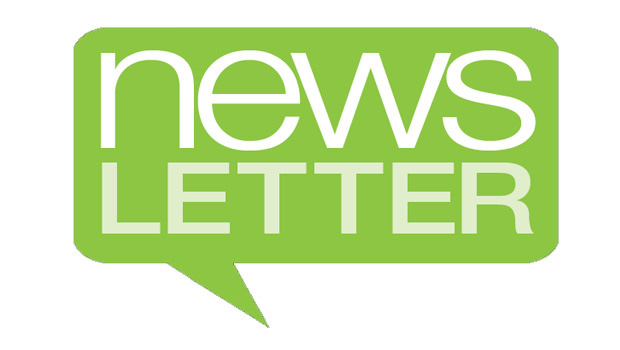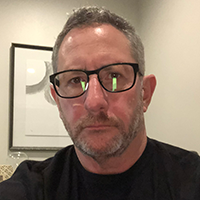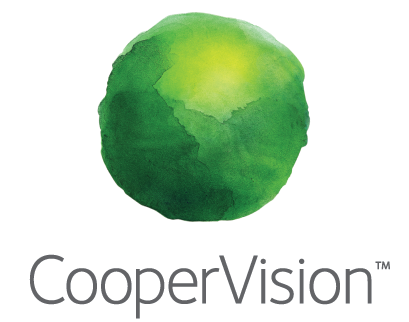

Discerning the New Normal |

By H. Kenneth Kopolow, OD; Board Member, SNAPP |
As many of us met in Atlanta just a few short months ago, our future was being reconstituted in ways we could have never imagined. For most, those early concerns for staff and patient safety prompted us to close, or severely limit operations, shortly after we returned home.
Amid a complete shutdown of all tourist-related businesses in Las Vegas, we’ve worked hard to keep five of seven Pearle locations open for urgent and emergent care. All Las Vegas indoor malls were closed by Nevada Governor Steve Sisolak on March 18, and other affiliated practice locations have therefore remained closed for six weeks.
Over the backdrop of CMS’ early proclamation that optometrists are “essential health care providers,” the process to decide if, when, and which offices to open took on a level of complexity when Gov. Sisolak ordered the immediate closing of all “nonessential businesses” on March 18. A list of “essential” businesses published in our local newspaper the next day included optometry as an essential business and optometrists as essential health care providers.
Meanwhile, the CDC, closely followed by the AOA, published its mandate calling for the immediate postponement of “routine eye care,” setting the stage for a huge difference of opinion among ECPs in Nevada and across the U.S. Social media sites were and still are flooded with questions and comments on just how to define “routine care.” Many were forced to close, some tried to survive on “urgencies and emergencies,” others simply enacted social distancing practices and some even disregarded guidelines and conducted business as usual.
For us, the key was… “What constitutes an urgency, an emergency or routine care?” Using fundamental triaging protocols, we reopened a few locations employing a three-question survey to determine how we would handle our incoming calls from patients seeking services.
Triage Survey
• Are you in pain?
• Have you had any sudden changes in vision?
• Would delaying your visit with us for up to 30 days impact your ability to manage your own responsibilities, or those at home?
Answering “Yes” to any of these three questions indicated (to us) the patient required urgent services and was scheduled as such. Answering “No” to all three questions indicated the patient was seeking non-urgent services and was scheduled for a later date. Patients were generally understanding and appreciative of this protocol.
After three weeks, we added a fourth question: “Do you suffer from any chronic illness which may affect your eyes or your vision such as diabetes, high blood pressure, neurological disease, auto-immune disease, or thyroid disease?” This question expanded our reach while still prioritizing patients needing care sooner than later.
Like other practioners, we were forced to deal with decisions around furloughing staff, social distancing, hygiene and sanitation, and telemedicine. Those protocols continue to evolve as we approach the “reopening of America.” I look forward to hearing from my SNAPP colleagues around how we are handling the challenges before us at our next National Meeting in September.
Readiness Strategies Webinar
In case you missed the live Zoom webinar on April 28, you can still watch and listen to the recording. In this second portion of a two-part webinar, Joe Deloach, president of Practice Compliance Solutions, reviews steps and strategies in opening. Discussion points include who makes decisions about reopening and how, patient screening and protective measures for patients and staff and doctors, what products to use for various disinfecting processes and more. Watch now, and use password: 4f!10==Z to view.

Post COVID-19 Protocols to Consider |

By Lisa Hamilton, OD; Board Member, SNAPP
In our Denver offices, we have been considering what steps we might take to protect associates and patients from coronavirus infection.
Mandatory scrub policy. Many doctors already wear scrubs and we are now considering whether staff should be issued scrubs as well. We would require the use of clean scrubs every day.
Scheduling and physical distancing. Even when we reopen, for the foreseeable future, the front door will be locked. We’re scheduling two patients an hour—one at the top of the hour and one at the bottom. There will be only two staff members on the doctor’s side and two staff members on the retail side to give everyone space.
Hygiene and sanitization. Staff members will be wearing masks and changing their gloves with every patient. High traffic and patient contact surfaces and instruments will be wiped down between patient encounters. We have placed hand sanitizers at several locations so that patients can sanitize their hands immediately upon entering. If patients want to wash their hands at the sink, one of our staff members turns the faucet on and off and pumps the soap to avoid having patients touch knobs and handles. We’ll likely continue offering curbside dispensing of products and eyewear for several weeks to months. We will also aggressively manage limits to the number of people who come into the office by asking patients only to arrive for their appointments.
Create a mask policy. While medical-quality masks can be difficult, some states and counties are mandating all essential workers wear masks. It’s an opportunity for operators to determine what their mask policy will be. It’s also time to determine whether patients will be required to wear masks.
Educate all staff on allergies and reactions to disinfectants. Since the staff might be handling more chemicals, such as bleach, Barbacide or CaviSide, make sure that staff members recognize symptoms of and know how to respond to an allergic reaction or if one of these products comes in contact with the eyes.

A Patient Care Guidance Update |
On April 24, the American Optometric Association confirmed with the Centers for Disease Control and Prevention (CDC) that the CDC’s March 17 nationwide recommendation to postpone routine eye care is no longer in effect and that CMS’ specific guidance on reopening facilities to provide nonemergent and non-COVID-19 health care is in force. State-by-state decisions will guide when and how doctors and practices can resume delivery of complete, comprehensive care.
The AOA has posted a guide to practice reactivation and other practice tools and crisis relief resources on aoa.org/coronavirus.
Payment Protection Plan Replenished
AOA-backed legislation was signed into law on Friday afternoon, April 24, to add more than $300 billion for the Paycheck Protection Program and expand the Small Business Administration’s Economic Injury Disaster Loan and grants program. Find more on this relief and AOA efforts.

Productively Filling Time in Your Practice without Patients |

By Shane Shepherd, Sr. Insurance Sales Manager, VisionWeb |
A good friend of mine, who was also once my employer and mentor, was always ready with a quip or little pearl of wisdom. These were often in the form of a quick thought, rather than a long dissertation, but still held the ability to change a body’s perspective once reflected upon.
In this particular instance, we had just held a meeting about some of the larger initiatives we wanted to tackle. On a busy August day, we stopped to offer each other a few encouraging words. John McCormick looked at me and said, “Man, if it weren’t for these pesky patients, we could actually get something done.” Both of us instantly recognized the accuracy as well as the irony of his statement. It was true. But obviously, we wouldn’t be employed without them.
The coronavirus has put many of us in the rare position of having time on our hands. I encourage you to tackle those items you never seem to get a chance to conquer. Billers; now is the time to work that aging like you’ve never worked it before. The steps I like to follow when addressing an aging AR.
1. Identify timely filing deadlines by payer
a. (Re)file any outstanding claim that is close to moving past these timely filing deadlines in order to reduce any bad-debt write-offs.
2. Post any outstanding EOBs and/or ERA payment information into your Practice Management system.
3. Starting with the claims newer than the timely filing date; work claims oldest to newest, biggest payer to smallest payer until all claims have been addressed. Each claim should be addressed by starting at the end of the process and working your way back to initial submission.
a. Verify a payment has been made but wasn’t posted.
b. Identify any denial on the remits—Be sure to submit these as corrected claims, not originals!
c. Identify any rejections that may be outstanding.—These will usually be found at the clearinghouse.
d. Make sure the claim was initially filed by looking at the clearinghouse and/or practice management system.
Working your aging fully during this time can help your practice maintain cash flow during these trying times. We hope you are able to fulfill a need for productivity while staying safe.
PS—The same mentor taught me about the big rock/little rock theory or the “empty pickle jar of life.” A search on either title will identify these nice time management exercises; here’s one version for your convenience.

What’s the Difference Between a Layoff and a Furlough?
Tip of the Month from AmCheck
The language used when sending employees home for a period of time is less important than communicating your actual intent.
Furlough
A furlough continues employment but reduces scheduled hours or requires a period of unpaid leave. The thought process is that having all employees incur a bit of hardship is better than some losing their jobs completely. For example, a company may reduce hours to 20 per week for a period of time as a cost-saving measure, or they may place everyone on a two-week unpaid leave. This is typically not considered termination; however, you may still need to provide certain notices to employees about the change in the relationship, and they would likely still be eligible for unemployment.
If the entire company won’t be furloughed, but only certain employees, it is important to be able to show that staff selection is not being done for a discriminatory reason. You’ll want to document the non-discriminatory business reasons that support the decision to furlough certain employees and not others, such as those that perform essential services.
Layoff
A layoff involves terminating employment during a period when no work is available. This may be temporary or permanent. If you close down completely, but you intend to reopen in the relatively near future or have an expected reopening date—at which time you will rehire an employee, or all employees—this would be considered a temporary layoff. Temporary layoffs are appropriate for relatively short-term slowdowns or closures. A layoff is generally considered permanent if there are no plans to rehire the employee or employees because the slowdown or closure is expected to be lengthy or permanent.
Pay for Exempt Employees (those not entitled to overtime)
Exempt employees do not have to be paid if they do no work at all for an entire workweek. However, if work is not available for a partial week for an exempt employee, they must be paid their full salary for that week, regardless of the fact that they have done less work. If the point is to save money (and it usually is), it’s best to ensure that the layoff covers the company’s established 7-day workweek for exempt employees. Make it very clear to exempt employees that they should do absolutely no work during any week you’re shut down. If exempt employees do any work during that time, they will need to be paid their normal weekly salary.
Pay for Non-Exempt Employees (those entitled to overtime)
Non-exempt employees only need to be paid for actual hours worked, so single day or partial-week furloughs can be applied to them without worrying about pay implications.
We recommend that you engage in open communication with the affected employees before and during the furlough or temporary layoff period.





